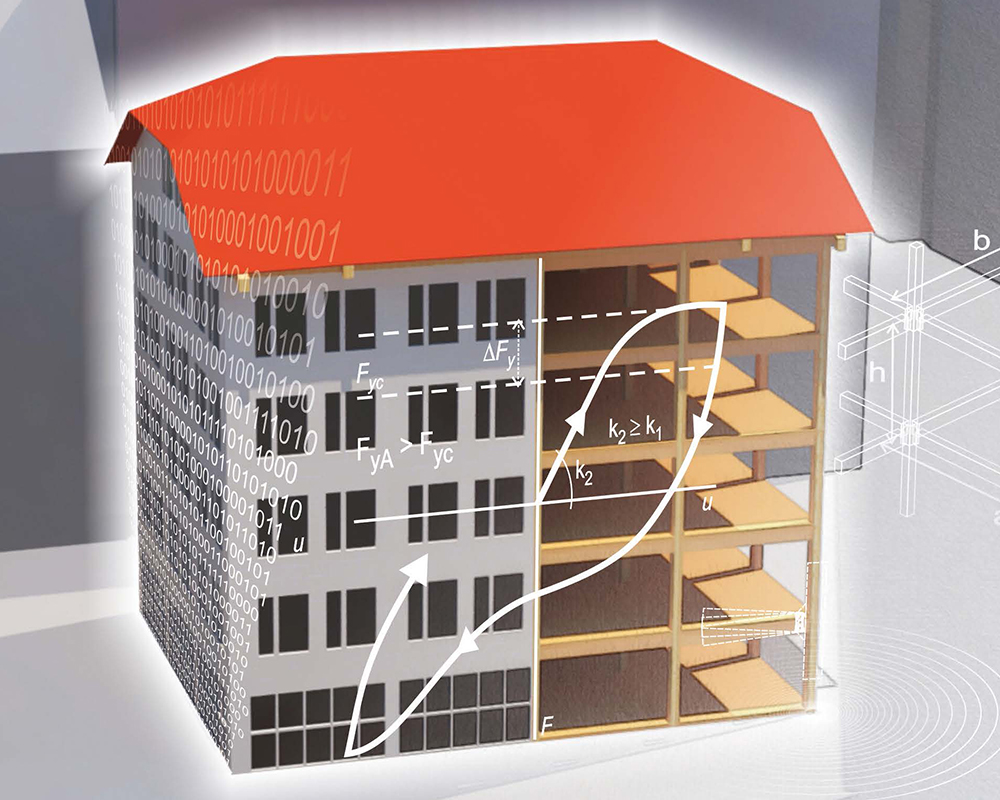Building physics is of essential importance in constructional engineering, as buildings can only retain their durability and value for centuries if they have been correctly constructed. We develop holistic solutions for industry and trade. One field of great expertise within our department lies in the combination of simulation procedures with structural and mechanical examination methods. The spectrum ranges thereby from the development of materials for application in the construction industry, through the complex issues of individual details and on to complete building systems. The improvement of the technical feasibility and serviceability as well as the optimization of the economic viability are paramount in the majority of the developments.
Building physics
Research topic

Our focus in building physics is the hygrothermal inspection of buildings, systems and components as well as all materials which are used in construction. One absolutely essential focus is formed by our specialist field: building physics in wooden construction.
Wooden buildings, lightweight constructions, sustainable and highly efficient buildings compose the center of our research. A further challenge is presented by the development of new and improved building materials in the contexts of durability and load-bearing capacity.
Wooden construction and building with other renewable raw resources is one of our core areas. We draw here upon many years of experience, whether in the application as a purely constructive building material or in modified variants as wood-based material and insulation material. From the building physics point of view, wood and other renewable raw materials differ considerably from mineral and fossil building materials: they react sensitively to climatic influences, and they “work”. In addition to the sustainability aspect, these materials also offer major advantages as regards the building physics. The profound sense of comfort in wooden buildings is the result of the hygrothermal properties of natural products. These properties should be taken into account and influenced in such a way that a product, a system or a structure exhibits precisely the desired characteristics. For sustainable and modular solutions in lightweight construction, complex composite materials and widely differing raw materials are necessary. Material usage, the interaction of components, and the linking of (sub-) systems with one another necessitate complex expert knowledge and functional laboratory equipment.
As a result of global climatic changes, new and existing systems, whether of wooden, lightweight or solid construction, must be able to durably withstand the given climatic conditions whilst also fulfilling the stipulated thermal and humidity standards. One thereby much-discussed property is the heat protection of buildings in summer and the associated thermal capacity and phase shifting of exterior components. On the basis of climate simulations, we develop future scenarios and study components theoretically concerning their hygrothermal behavior, their load-bearing behavior and their durability. Investigations using device technology enable us to perform practical validations of the simulation results in our climate simulation facilities.
A building is a complex system with differing components. These must be coordinated with one another during the planning phase in order to enable the overall system to work sustainably and energetically efficiently. We address the hygrothermal examination of individual materials as far as their interaction on component level. Furthermore, we determine and simulate geometric and constructive thermal bridges between component connections on buildings.
 Fraunhofer Institute for Wood Research
Fraunhofer Institute for Wood Research